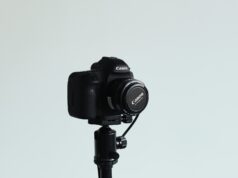LinkedIn’s role in the digital space has evolved dramatically over the past few years. No longer just a platform for job hunting or corporate announcements, it has grown into a powerful tool for content distribution, professional branding, and community building.
The 2025 LinkedIn Benchmarks report by Socialinsider provides a detailed analysis of the platform’s current performance, the formats that drive the most engagement, and how content creators, ranging from individuals to brands, can make informed decisions. Here’s what the numbers tell us and what they mean in practice.
Engagement Is Rising, But Not All Content Is Equal
Engagement on LinkedIn is up by an impressive 30% year-over-year, a figure that reflects both growing user activity and evolving content strategies.
By the way, if you want to stay connected and know everything about social commerce and never miss a beat, join Logie today! Click here
However, some formats perform better than others. Multi-image posts are currently the top performer with a 6.6% average engagement rate (measured by impressions), followed closely by native documents or carousels at 6.1%.
These formats are visual, easy to digest, and designed to encourage users’ swiping behaviors, which likely signal value to LinkedIn’s algorithm. Their popularity speaks to a broader trend across social platforms: content that tells a story or breaks down an idea visually tends to hold attention longer and prompt more interaction.
Video engagement is also rising, with a jump to 5.6% from the previous 4%. This is a reminder that polished production isn’t always necessary; creators who deliver quick, authentic, and informative videos under 90 seconds are seeing great results.

Meanwhile, image posts and polls also saw respectable performance (4.85% and 4.4%, respectively), proving that even simple formats can be practical when paired with good copy and relevant context.
Text-only posts remain the lowest-performing content type at 4%, though this has improved, likely due to better storytelling and stronger opinion-led content.
A Shift Toward Intentional Content Formats
These results point to a simple truth: success on LinkedIn in 2025 is no longer about posting frequently or chasing likes; it’s about using the right formats in the right way.
Multi-image posts and carousels are perfect for breaking down complex ideas, showcasing work processes, or highlighting event recaps. They allow for storytelling and education in a swipe-friendly format, which is well-suited for the platform’s professional audience.
Video content is also becoming essential, but not in the same way as on TikTok or Instagram. The best-performing videos on LinkedIn are concise, direct, and value-packed, often featuring professionals speaking directly to the camera or demonstrating insights relevant to their respective industries.
Captions are crucial here, given how often users scroll without sound. When used effectively, polls can spark genuine conversations, especially when tied to current events or thought-provoking questions within a niche.
Generative polls and text posts that lack personality or purpose are no longer effective. The takeaway here is simple: format matters, and how you use it matters even more.
What Posting Behavior Tells Us About Brand Strategy
The benchmark report also examined brand behavior on LinkedIn and how it is evolving. Static image posts still make up 32% of branded content, while 30% of posts include links. However, despite their volume, link-heavy posts tend to underperform.
This is a challenge for marketers still trying to drive traffic off-platform. LinkedIn prefers content that keeps users engaged within the ecosystem. It’s also worth noting that link posts often get buried by the algorithm unless paired with exceptional context or visuals.
In contrast, brand video usage is up 8%, poll usage is a massive 55%, and even text posts increased by 18%. This shift reflects a growing awareness that engaging content drives more visibility than purely promotional updates.
For brands, the best-performing pages do more than promote; they educate, entertain, and facilitate conversations.
Interestingly, companies with 100,000+ followers can now expect their videos to average around 2,000 views, showing that the potential for reach on LinkedIn is growing, especially when formats are used thoughtfully.
More Quality, Less Quantity
What’s particularly refreshing in the data is that frequency seems to matter less than it used to. The highest-performing pages aren’t necessarily posting every day. Instead, they’re showing up consistently with formats optimized for engagement.
Even posting two to three times a week can be more effective than daily posts with generic content if it’s in the right format and speaks to your audience’s interests.

The move away from “volume over value” is long overdue, and it’s encouraging to see it reflected in platform performance.
So what’s the practical advice? Double down on content that encourages interaction: slideshows that teach, videos that explain, and polls that spark debate.
Avoid dropping links without context or relying too heavily on static text. Mix up your content to keep your audience engaged, and always analyze what resonates so you can keep improving.
LinkedIn in 2025 is no longer just a professional networking site; it has evolved into a legitimate content hub. And unlike more entertainment-driven platforms, it rewards depth, thoughtfulness, and relevance over trend-hopping.
But to get the most from it, you can’t treat it like any other social channel. You must respect its nuance, speak to your audience’s professional identity, and make content that delivers real value.
If you’re still approaching LinkedIn like it’s just for job updates or company announcements, you’re leaving a lot of potential on the table. The benchmarks are clear: what you post and how you post it are more important than ever.











